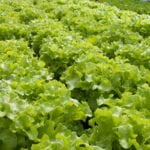Pressure treated wood is a popular choice for constructing vegetable gardens due to its durability and resistance to decay. In this article, we will delve into the significance of using pressure treated wood in vegetable gardens, examining the process, benefits, safety concerns, and environmental impact associated with this material.
Pressure treated wood undergoes a treatment process that involves impregnating the wood with preservatives to protect it from moisture, insects, and decay. This treatment enhances the longevity of the wood, making it ideal for outdoor use in garden settings. By understanding the properties of pressure treated wood, gardeners can make informed decisions when choosing materials for their raised beds or garden structures.
While pressure treated wood offers numerous advantages for vegetable gardens, there are also safety concerns that should be addressed. It is essential to take precautions when handling and working with pressure treated wood to minimize potential risks. By selecting the right type of pressure treated wood and following best practices for maintenance, gardeners can create safe and sustainable environments for growing vegetables.
What Is Pressure Treated Wood
Pressure treated wood is a popular choice for constructing vegetable garden beds due to its durability and resistance to decay, pests, and moisture. So what exactly is pressure treated wood and how does it differ from regular lumber?
Pressure treated wood undergoes a special treatment process that involves immersing the wood in chemical preservatives and then subjecting it to high-pressure conditions. This process helps the preservatives penetrate deep into the wood fibers, creating a long-lasting barrier against rot and insect damage.
The benefits of using pressure treated wood for vegetable gardens are numerous. First and foremost, it extends the lifespan of your garden beds, ensuring they remain sturdy and intact for years to come. With proper care and maintenance, pressure treated wood can withstand the elements and harsh outdoor conditions without deteriorating quickly. Additionally, by choosing pressure treated wood, you are investing in a reliable material that will provide a stable foundation for your vegetable plants to thrive.
When considering using pressure treated wood for vegetable gardens, it is important to be aware of some safety concerns associated with this type of material. The chemicals used in the treatment process can potentially leach into the soil over time, which may raise questions about their impact on plant health and food safety.
To minimize these risks, it is recommended to line the interior of raised beds with a heavy-duty plastic barrier or use a natural sealant on the exposed surfaces of the wood to prevent direct contact with soil or edible plants grown in close proximity. By taking these precautions, you can enjoy the benefits of pressure treated wood while still prioritizing the safety of your vegetables.
- Pressure treated wood undergoes immersion in chemical preservatives
- The high-pressure conditions help penetrate preservatives deep into the wood fibers
- This creates a long-lasting barrier against rot and insect damage
Safety Concerns
When it comes to using pressure treated wood for vegetable gardens, there are some safety concerns that gardeners need to be aware of in order to ensure the health and well-being of both their plants and themselves. One major consideration is the chemicals used in the pressure treating process, particularly chromated copper arsenate (CCA), which was commonly used in the past but has since been phased out due to environmental and health risks.
Despite this change, newer treatments like alkaline copper quaternary (ACQ) or copper azole still contain chemicals that can potentially leach into the soil over time.
Protecting Your Health and Safety
To mitigate these risks, it is crucial to take certain precautions when working with pressure treated wood in vegetable gardens. Firstly, always wear gloves and a mask when cutting or handling the wood to avoid direct contact with any chemical residues.
Additionally, it is recommended to seal any freshly cut areas with an appropriate sealer or paint to prevent leaching of chemicals into the soil. Be mindful of where you place your pressure treated wood beds – avoid placing them too close to food crops or areas where children or pets play frequently.
Monitoring Soil and Plant Health
Regularly monitor the health of your soil and plants when using pressure treated wood for vegetable gardens. Keep an eye out for any signs of toxicity such as stunted growth, yellowing leaves, or wilting plants. If you suspect any issues related to the pressure treated wood, consider conducting soil tests to check for chemical contamination.
It may also be wise to rotate your crops regularly to minimize potential exposure to any lingering chemicals in the soil. By staying vigilant and proactive, you can enjoy your vegetable garden while keeping safety a top priority.
Choosing the Right Type of Pressure Treated Wood
Pressure treated wood is a popular choice for constructing vegetable garden beds due to its durability and resistance to decay. However, not all pressure treated wood is created equal, and it’s essential to choose the right type for your garden. When selecting pressure treated wood for vegetable gardens, consider factors such as the treatment process, toxicity levels, and longevity.
Types of Pressure Treatment
Pressure treated wood is typically treated with chemicals such as chromated copper arsenate (CCA), alkaline copper quaternary (ACQ), or copper azole. CCA was commonly used in the past but has been phased out due to health concerns. ACQ and copper azole are now more prevalent options. ACQ is considered safe for vegetable gardens as it does not contain arsenic or chromium, making it less toxic for plants and humans.
Suitability for Garden Beds
When choosing pressure treated wood for vegetable gardens, opt for varieties labeled as suitable for ground contact or outdoor use. These treatments offer higher levels of protection against rot and pests present in soil. Look for labels specifying that the wood is safe for use around food crops to ensure it meets safety standards for edible gardening purposes.
Considerations When Selecting
Before purchasing pressure treated wood for your garden beds, inquire about the treatment process and chemicals used. Verify that the wood is certified by reputable organizations such as the American Wood Protection Association (AWPA) to guarantee its safety for vegetable gardening. Additionally, consult with local experts or extension services to determine the most appropriate type of pressure treated wood based on your specific growing conditions and needs.
Building Raised Beds With Pressure Treated Wood
Pressure treated wood is a popular choice for constructing raised beds in vegetable gardens due to its durability and resistance to decay, insects, and moisture. When building raised beds with pressure treated wood, it is essential to follow a step-by-step guide to ensure that the beds are not only long-lasting but also safe for growing vegetables.
The first step in building raised beds with pressure treated wood is to gather all the necessary materials and tools. This includes pressure treated lumber, galvanized screws or nails, a saw for cutting the wood to size, a drill for making holes and securing pieces together, and a level for ensuring that the bed is even.
It is crucial to use appropriate safety gear such as gloves and goggles when working with pressure treated wood to prevent any potential health risks.
Once you have all the materials ready, you can start by measuring and cutting the pressure treated wood according to the dimensions of the raised beds you want to build. Next, assemble the pieces together using screws or nails to create the frame of the raised bed.
Make sure to check for levelness throughout the construction process to avoid any tilting or instability. Finally, place your newly constructed raised beds in your desired location in the garden and fill them with soil before planting your vegetables.
When building raised beds with pressure treated wood for vegetable gardens, it is important to consider proper drainage by drilling holes in the bottom of the bed if needed. Additionally, some gardeners choose to line the interior of their raised beds with landscaping fabric before filling them with soil to prevent direct contact between the soil and pressure treated wood.
These precautions help mitigate any potential leaching of chemicals from the wood into the soil where your vegetables will be growing.
| Material | Tools |
|---|---|
| Pressure Treated Lumber | Saw |
| Galvanized screws or nails | Drill |
| Gloves and goggles | Level |
Maintaining Pressure Treated Wood
Pressure treated wood is a popular choice for constructing vegetable garden beds due to its durability and resistance to rot, decay, and insects. To ensure that your pressure treated wood retains its quality and longevity in garden settings, proper maintenance is essential.
One important tip is to regularly inspect the wood for any signs of damage, such as cracks or splinters, and address them promptly to prevent further deterioration. Additionally, applying a sealant or wood preservative specifically designed for pressure treated wood can help protect it from the elements and extend its lifespan.
Another key aspect of maintaining pressure treated wood in vegetable gardens is to ensure proper drainage around the garden beds. Excess moisture can lead to faster deterioration of the wood, so it’s important to make sure that water drains away from the beds efficiently.
You can achieve this by incorporating drainage systems such as gravel or perforated pipes around the base of the raised beds. Additionally, avoiding direct contact between the soil and the pressure treated wood by using a barrier such as landscaping fabric can help prevent moisture buildup and prolong the life of the wood.
Regular cleaning of pressure treated wood in vegetable gardens is also crucial for preserving its quality and appearance. Dirt, debris, and organic matter can accumulate on the surface of the wood over time, leading to discoloration and promoting mold or mildew growth. To clean pressure treated wood, simply use a mild detergent or specially formulated cleaner with a soft bristle brush or cloth.
Avoid using harsh chemicals or power washing techniques, as they can damage the protective treatment on the wood. By following these maintenance tips, you can ensure that your pressure treated wood stays in optimal condition for years to come.
| Maintenance Tip | Description |
|---|---|
| Inspect Regularly | Check for damage like cracks or splinters and address promptly. |
| Ensure Proper Drainage | Prevent moisture buildup by promoting efficient water drainage. |
| Clean Regularly | Remove dirt and debris with a mild detergent and soft brush. |
Environmental Impact
Pressure treated wood has been a popular choice for constructing garden beds, including vegetable gardens, due to its durability and resistance to rot and pests. However, the environmental impact of using pressure treated wood in garden settings is a topic of concern for many environmentally conscious gardeners. It is essential to consider the sustainability aspects of this material to make informed decisions about its use in gardening.
When utilizing pressure treated wood for vegetable gardens, one major consideration is the chemicals used in the treatment process. These chemicals, such as chromated copper arsenate (CCA) or alkaline copper quaternary (ACQ), can leach into the soil over time, potentially affecting plant growth and posing risks to human health. To mitigate these environmental concerns, it is crucial to understand the types of treatments used in the wood and their long-term effects on the garden ecosystem.
To address the environmental impact of pressure treated wood in vegetable gardens, here are some key points for gardeners to keep in mind:
- Consider opting for alternative treatments that are less harmful to the environment, such as micronized copper azole (MCA) or copper azole.
- Regularly monitor the soil pH levels and plant health when using pressure treated wood to detect any signs of chemical leaching.
- Dispose of any old pressure treated wood properly by recycling or repurposing it instead of burning or throwing it away.
By being mindful of these environmental considerations and taking proactive steps to minimize potential risks, gardeners can continue to enjoy the benefits of pressure treated wood while promoting sustainability in their vegetable gardens.
Alternative Options
Pressure treated wood can be a popular choice for constructing vegetable garden beds due to its durability and resistance to decay. However, if you have concerns about using pressure treated wood for vegetable gardens, there are alternative options available that can provide a safe and sustainable alternative. Non-treated wood, such as cedar or redwood, is a natural option that can be used to build raised beds without the worry of chemicals leaching into the soil and affecting your plants.
In addition to non-treated wood, there are other materials that can be considered for constructing vegetable garden beds. Recycled plastic lumber, composite materials, or even stone or concrete blocks can be used to create long-lasting and environmentally friendly raised beds. These materials offer different aesthetics and benefits compared to pressure treated wood, giving you the flexibility to choose the best option for your garden based on your preferences and values.
Ultimately, the decision of whether to use pressure treated wood in your vegetable garden beds comes down to weighing the benefits against any potential risks. By exploring alternative options such as non-treated wood or other materials, you can create a safe and healthy environment for your vegetables to thrive without compromising on durability or longevity. With careful consideration and proper maintenance, you can enjoy a bountiful harvest while being mindful of the materials you use in your garden.
Frequently Asked Questions
Is It OK to Use Pressure-Treated Wood in a Vegetable Garden?
It is generally not recommended to use pressure-treated wood in a vegetable garden due to the chemicals used in the treatment process. These chemicals can leach into the soil and potentially be absorbed by the plants, which can be harmful if consumed.
What Kind of Wood Do You Use for Raised Vegetable Beds?
Cedar and redwood are popular choices for raised vegetable beds due to their natural durability and resistance to rotting. These types of wood are also known for their ability to withstand moisture, making them ideal for long-term use in a vegetable garden.
What Kind of Wood Is Used for Vegetable Gardening?
When it comes to wood for vegetable gardening, untreated cedar, redwood, and cypress are commonly used due to their natural resistance to decay and insects. These types of wood are considered safe for growing vegetables since they do not contain harmful chemicals that could potentially harm plants or leach into the soil.

If you’re looking to get into vegetable gardening, or are just looking for some tips on how to make your current garden better, then you’ve come to the right place! My name is Ethel and I have been gardening for years. In this blog, I’m going to share with you some of my best tips on how to create a successful vegetable garden.





